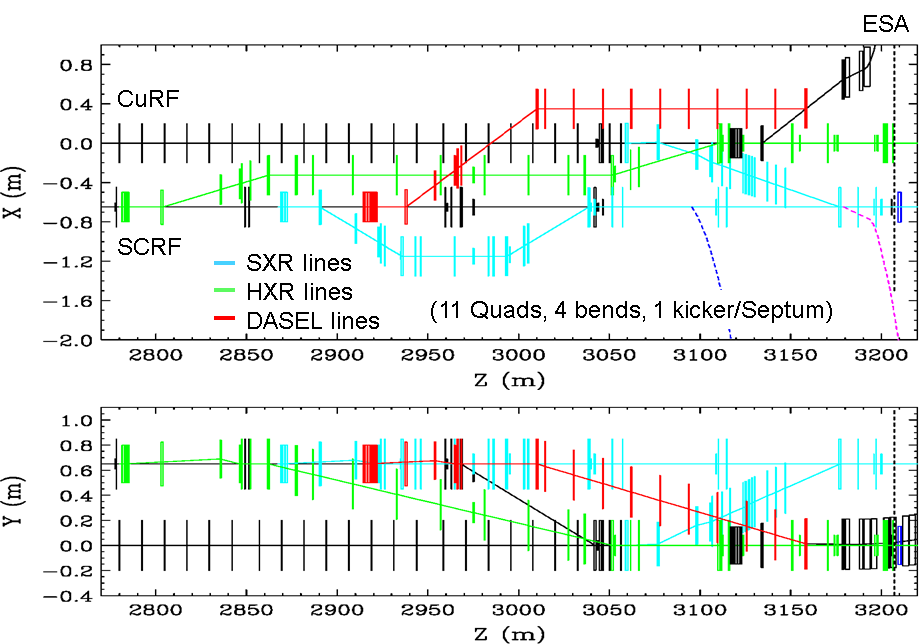The LCLSII superconducting linac accelerates 250kW of electrons to 4 GeV in bunches spaced 1.08usec (929kHz) apart and extracts them to either of two undulators or passes them to a beam dump. The LCLSII RF gun operates at 186MHz. Each of the 200 bunches in between those destined for the undulators will carry electrons from the gun HV “dark current” or can be seeded with a very low charge by an independent source laser operating at low power at the gun frequency. DASEL (Dark Sector Experiments at LCLSII) is a proposal to seed and then extract the central ~60% of these low charge bunches and to transport them to the existing End Station A beam line for use in an experimental program designed to search for evidence of dark matter in the MeV-GeV mass range. DASEL
The Sector 30 Transfer Line AIP (S30XL), currently under construction, will provide a new, long-pulse kicker to divert ~60% of the dark current from the gun to a dump ~90m downstream in the linac tunnel for beam studies, test beam, and precision QED measurements. S30XL will extract these bunches after they pass the second of the two LCLSII kickers and before the beam is bent down to the 250kW dump. This proposal is to develop the four main elements of the DASEL: the source laser, the kicker-septum, the ~250m beamline and a spoiler-collimator system that can shape the beam phase space to the requirements of the experimental program.
Linac to End Station A (LESA) is a proposal to add an additional ~160m of beamline, connecting the S30XL beamline to the existing A-Line to deliver a CW electron beam to End Station A — a capability unique within the HEP complex. The addition of a seed laser, used in conjunction with the existing spoiler-collimator system in the A-Line, offer substantial flexibility in beam conditions. The time structure and energy of the LESA's electron beam will enable the planned experiments to provide definitive results on a multi-pronged science program, including (1) electron-scattering measurements supporting the accelerator-based neutrino program, (2) high-impact searches for low-mass thermal relic dark matterdark matter (Missing momentum experiments such as LDMX were highlighted in the 2018 Dark Matter BRN report), and (3) a broad test beam program that leverages the time structure and short pulses delivered by LCLS-II.
Recent space activity
| Recently Updated | ||||||||
|---|---|---|---|---|---|---|---|---|
|
Space contributors
| Contributors | ||||||||||
|---|---|---|---|---|---|---|---|---|---|---|
|
